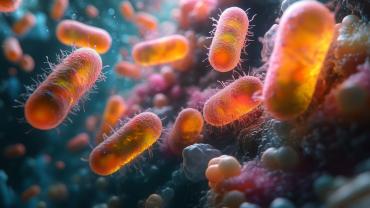
The world of human gut microbiome research is evolving. In the early 1900s, Eli Metchnikoff, a Russian scientist, proposed that modifying the gut microbiome was possible by replacing potentially harmful bacteria with good bacteria. It earned him a Nobel Prize in 1908. In 2012, over 1,300 strains were referenced by the combined efforts of many international organizations through the Human Microbiome Project (HMP). Today, the Health Associated Core Keystone Index (HACK) was developed, which ranks over 200 bacterial taxa according to their presence, stability, and association with human health.
Keystone species are bacterial taxa that are associated with microbial community stability, and, if absent, would lead to substantial ecological consequences. Although difficult to achieve, understanding the microbial signature that underpins a “healthy microbiome” is highly desirable for microbiome-based therapeutics aimed at ameliorating human disease. This is because common health conditions are associated with alterations in the human gut microbiome, including obesity, type 2 diabetes, and even acne. However, the challenge is that there are high inter-individual differences complicated by external factors, including mode of delivery (i.e., vaginally birthed or C-section), breastfeeding status, use of medications, environment, geographic location, and common dietary patterns, among others.
The recently published Toward a health-associated core keystone index for the human gut microbiome (Cell Reports; 2025) addressed this question by analyzing over 45,000 microbiomes from 141 cohorts worldwide. Using the HACK index, the researchers ranked 201 gut taxa based on three key outcomes:
By combining these factors, keystone taxa were identified.
Among the highest-scoring taxa on the list are well-known and loved species like Faecalibacterium prausnitzii, Roseburia intestinalis, and Bacteroides uniformis, along with others, including Odoribacter splanchnicus, Fusicatenibacter saccharivorans, Coprococcus catus, Eubacterium rectale, Oscillibacter sp. 57_20, Eubacterium ramulus, and Agathabaculum butyriciproducens. Surprisingly, other species that continue to attract substantial research attention were present but ranked lower on the HACK index, including ones the reader may be more familiar with, such as Akkermansia muciniphila, Bifidobacterium longum, and Bifidobacterium adolescentis. Overall, the species that support adequate butyrate production and stabilize the microbial community scored higher on the list than traditional probiotics such as Bifidobacterium longum and Lactobacillus species.
Just like in natural ecosystems — where the loss of wolves in Yellowstone disrupted the entire food chain — losing keystone species destabilizes the gut community. This is linked to health conditions that affect the larger global community, including obesity, type 2 diabetes, and even acne. By identifying and supporting keystone species for human health, personalized health-care strategies can be developed to better support these conditions.
In conclusion, research investigating the human gut microbiome is ever-evolving, and the gut microbiome is not defined by one “magic strain,” but by a network of keystone species that work together to maintain stability and resilience. As research advances, understanding and supporting these keystone taxa could transform how we think about probiotics, diet, and personalized health interventions.
To learn more about the human microbiome:
Two Next-Generation Probiotics You Should Know About: Anaerostipes and Akkermansia
Fueling the Gut: How Anaerostipes Caccae Powers Butyrate Production
Parallels in Butyrate Delivery: Comparative Insights into Tri-Butyrin and Anaerostipes
By Bri Mesenbring, MS, CNS, LDN